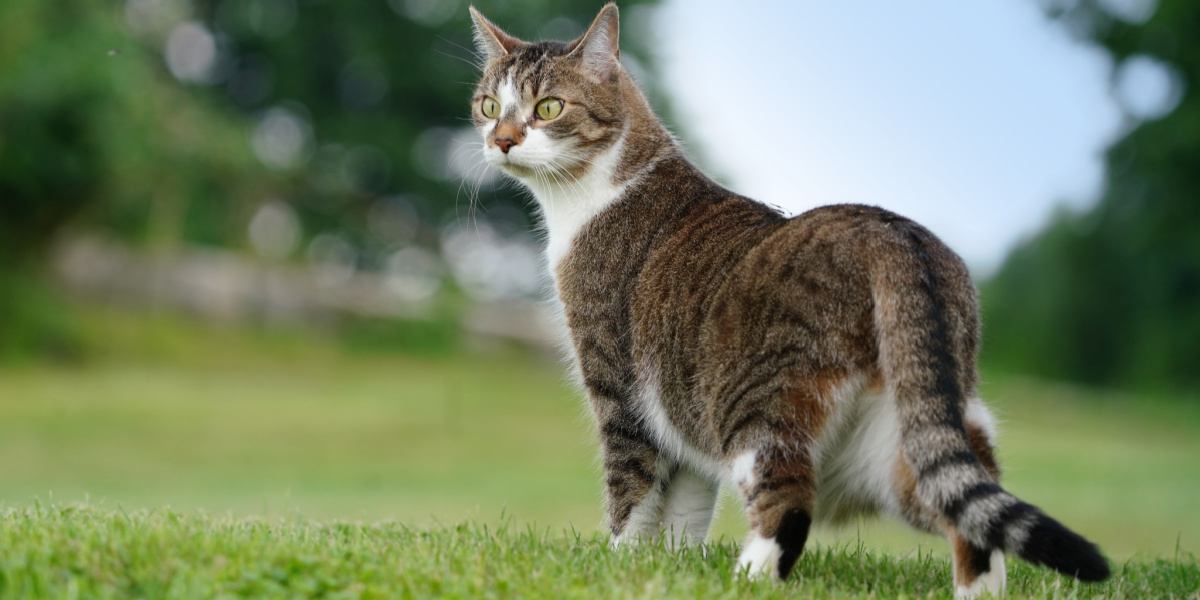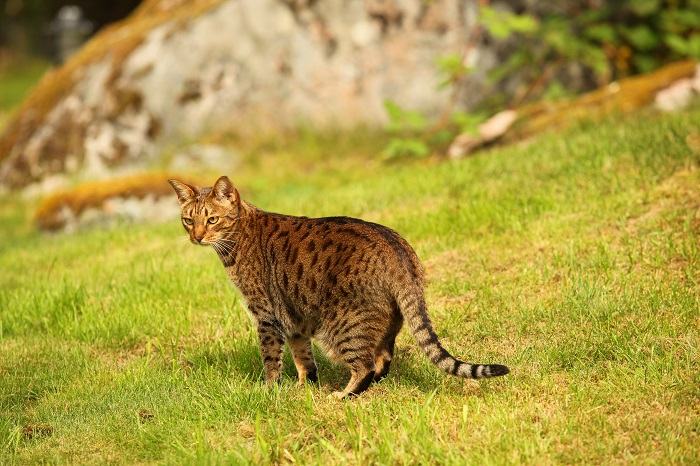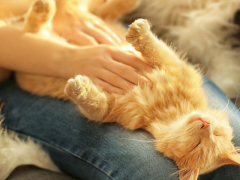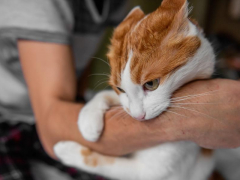
All pet owners will be familiar with tales of cats who can predict foul weather, even before the weatherman can. But are these stories of miraculous weather predictions just superstitions, or can cats actually tell if there is an impending storm?
Our pets are well adapted to read their environment, and cats sense many things more accurately than us humans. As with all animals, it might benefit cats to know in advance when the weather changes. Before we all turn to our felines to replace the meteorologist, let’s take a look at cat behavior and their super senses, and how cats respond to subtle signals, such as changes to atmospheric pressure.
Tales of Old
Using cat behavior to monitor the weather is a tradition steeped in history. For centuries, tales have been told of the supernatural power of felines to predict storms. Cats were recorded as naval companions as far back as the ancient Egyptians.
Cats were thought to predict storms and other foul weather. Common beliefs include that if a cat sneezes, rain is on the way, and that a frisky cat indicates a storm is approaching.
More Modern Thoughts
Sailors’ superstitions are one thing, but is there actually any evidence that cats can sense bad weather coming? Let’s have a look at the real reasons behind why these beliefs might have been born.
1. Air Pressure

Barometric pressure drops before a storm appears, and cats might sense these air pressure changes.
Atmospheric changes before severe weather are well known. The barometric pressure drops suddenly a few hours before a thunderstorm. It has been shown that various creatures, such as moths and aphids,1 and even birds2 are sensitive to this drop, changing their behavior in response to sudden barometric pressure changes.
This is thought to be a protective instinct, a signal to these vulnerable beings to seek shelter before a storm hits.
Our modern domestic cats do not necessarily need this protection. As cat owners, we provide ample shelter. Indoor cats are snug inside their homes, and even an outdoor cat can usually find a safe place to wait out a rainstorm.
However, their wild cat ancestors were likely more affected by weather changes, and this inbuilt natural instinct to find shelter might still be strong in our pets.
A cat’s inner ears are much more sensitive to ours and will alert the cat to air pressure changes. They will have learned that this drop in atmospheric indicates that bad weather is approaching, which should prompt them to find shelter.
This might explain why a usually outdoors-loving cat might be found having a cozy cuddle in their warm bed on the day of a storm, even before the bad weather actually hits.
Some cats seem particularly sensitive to these changes, and become antsy and fearful before a storm. It’s possible they might associate the incoming weather with something they find frightening, such as the loud noises of thunder or strong wind.
2. Senses
Cats are much more sensitive than us to sounds and smells. As predators of small prey, cats need to be able to read their environment accurately and quickly. A rustle in the bushes, the smell of a mouse from a distance—these are necessary skills for these skilled hunters.
Their sense of smell is phenomenal, with around 40 times more scent receptors than humans. Their olfactory system is even dual purpose. As well as regular odors, they can also pick up on pheromones (chemical messages), which help them communicate.
Their hearing is also more advanced than ours. The shape of their ears helps to amplify sounds into the middle and inner ears, and the range of frequencies they can detect is much wider than ours.
It is likely that cats may be able to pick up on some scent cues that a change of weather is approaching, such as the smell of rain. Lightning also produces a very characteristic metallic odor, caused by released ozone gas.
Their acute hearing will be able to detect the rumble of thunder well before we can. These subtle signs will be enough to send your cat running inside to avoid incoming rain, and find a warm place to snuggle up and wait out the bad weather.
Keeping Cats Calm and Safe

If your cat is upset by storms, keep them indoors when bad weather is on the way.
If your cat is particularly sensitive to storms, cold weather, or rainy days, you can take some simple steps to keep them calm and relaxed. An unhappy cat will show you their discomfort with their posture and body language: a bushy tail, a tense, curled posture, and wide eyes.
Here are some tips for keeping cats safe and happy:
- Stay calm yourself! Cats are very attuned to our body language and moods.
- Keep them indoors if bad weather is coming. If your cat hates being restrained indoors, make sure they have an accessible covered area they can seek shelter in.
- Provide a cozy hiding place. An enclosed bed is ideal, somewhere dark and quiet. Cats feel safest when they are up high, so an elevated bed would be most appreciated.
- Stay close to them. Do not disturb them if they are hiding, but be there if they want some reassurance, cuddles, or even a game with their toys to distract them.
- Turn on the TV, radio, or music while a storm rages to dull the outside noise.
- Pheromone diffusers can help your cat feel safe and relaxed.
- If your cat gets very distressed with stormy weather, speak to your veterinarian, who may be able to prescribe some medication or advise on calming supplements.
- Get your cat microchipped so if they’re spooked by the storm and roam further than expected, they can be easily reunited with you.
Cats and Weather: Summing Up
Cats have been linked to weather predictions for thousands of years, and there may well be some truth in these old tales. Cats are sensitive to changes in air pressure. Combine this with their super accurate senses of hearing and smell, and it is very believable that cats must be able to sense changes in the weather.
It also makes perfect sense that these early warning signs may trigger behavioral changes, as a protective instinct to find shelter and warmth. Some cats seem more disturbed by weather changes than others, and these more sensitive felines may need some support and reassurance through adverse weather.
Also Read: New Research Suggests Cats Possess Healing Powers
-
Weather forecasting by insects: modified sexual behavior in response to atmospheric pressure changes.PLoS One. 2013 Oct 2;8(10):e75004. doi: 10.1371/journal.pone.0075004. eCollection 2013.Pellegrino AC1, Peñaflor MF, Nardi C, Bezner-Kerr W, Guglielmo CG, Bento JM, McNeil JN
-
Environment, behavior and physiology: do birds use barometric pressure to predict storms?J Exp Biol. 2013 Jun 1;216(Pt 11):1982-90. doi: 10.1242/jeb.081067.Breuner CW, Sprague RS, Patterson SH, Woods HA







